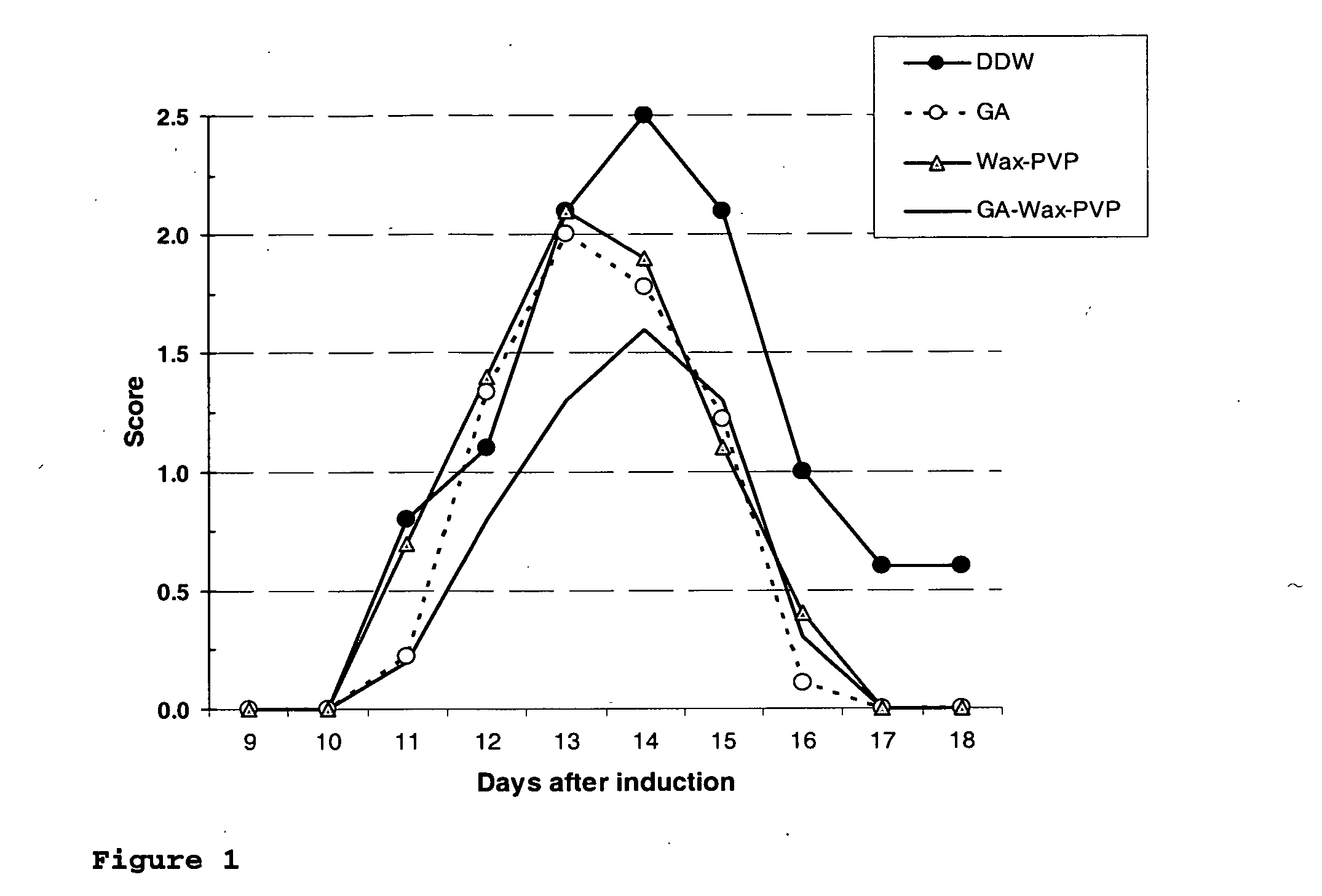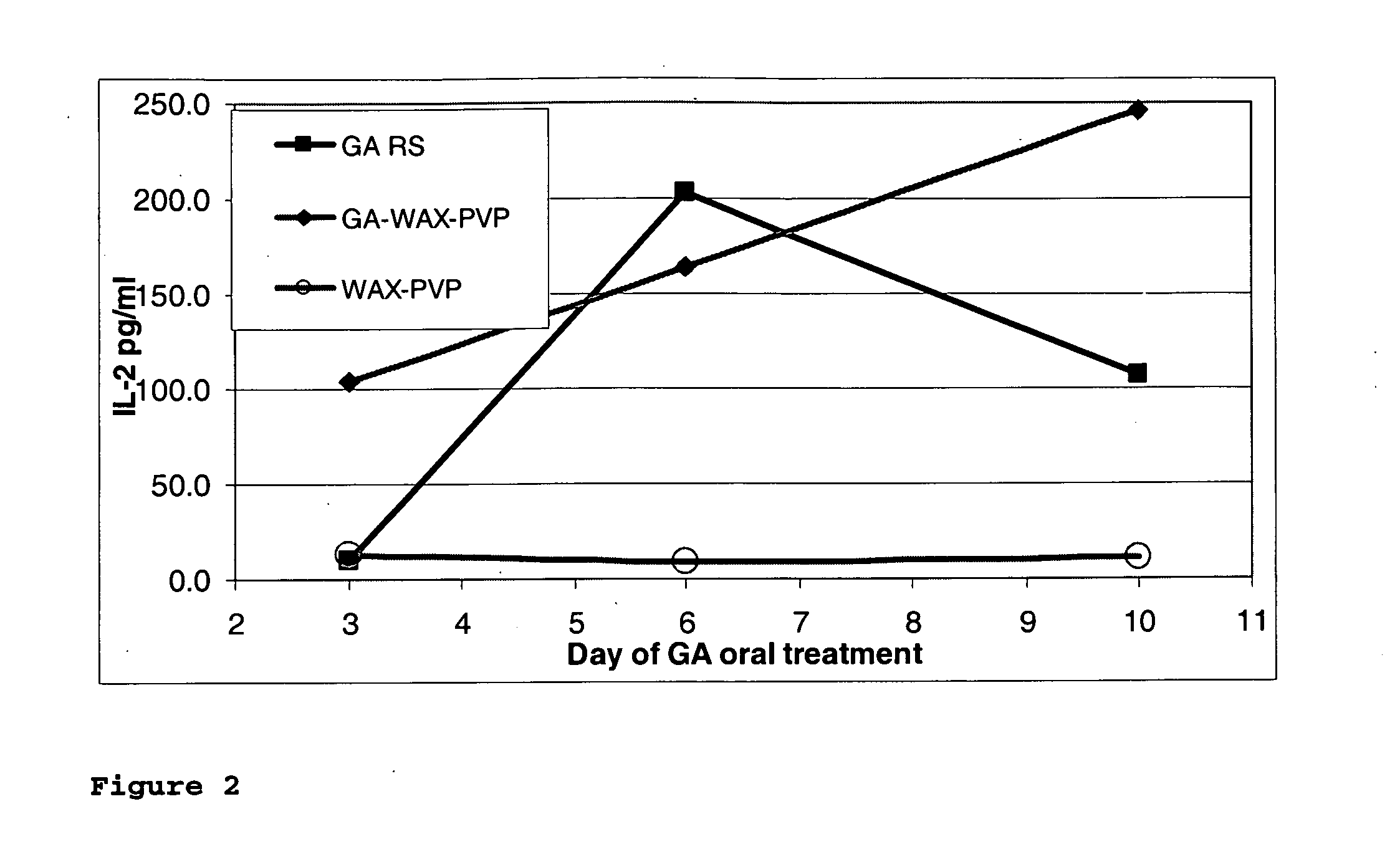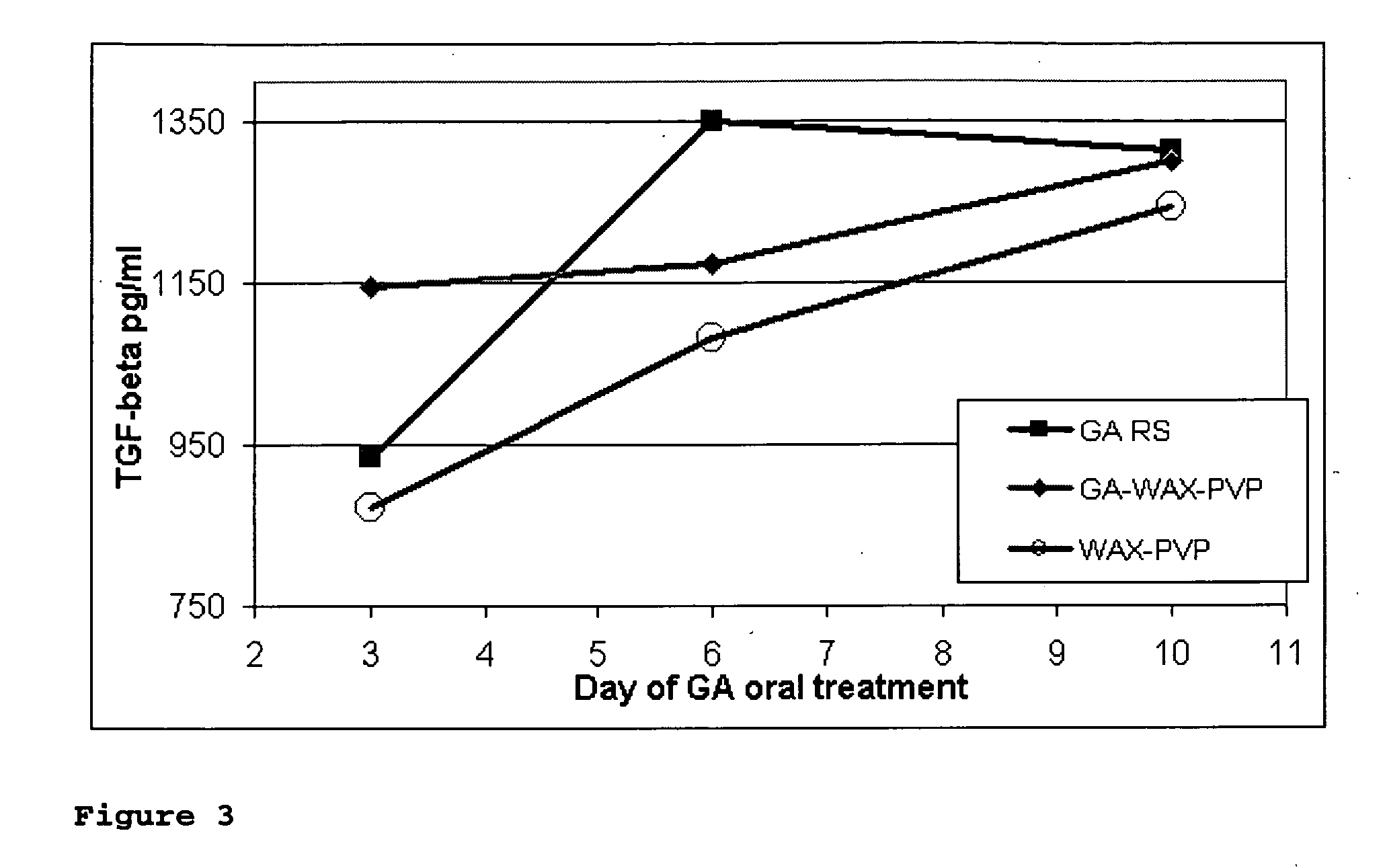Nanoparticles for drug delivery
a technology of nanoparticles and drug delivery, applied in the direction of drug compositions, immunologic disorders, anti-inflammatory agents, etc., can solve the problems of oral delivery being precluded, microemulsions cannot be a general method for delivering peptide drugs, and peptides or proteins cannot be protected from degradation, so as to inhibit enzymatic degradation of peptides
- Summary
- Abstract
- Description
- Claims
- Application Information
AI Technical Summary
Benefits of technology
Problems solved by technology
Method used
Image
Examples
example 1
[0071] Gelucire® 50 / 13 wax (82.6 parts) was placed in a jacketed reactor fitted with a stirrer. The wax was melted by heating to about 70° C. with stirring. Sodium Ducosate (5.8 parts) was added and a solution of the ducosate in the melted wax was obtained. Preheated water (784 parts) was added and the mixture stirred at 200 rpm for 15 minutes at 70° C. A spontaneous microemulsion formed. The mass was then cooled to room temperature over a period of 120 minutes forming a nano suspension from the microemulsion. Glatiramer acetate (GA) (11.6 parts) was dissolved in 100 parts water and added to the stirred reactor. The mixture was stirred for thirty minutes allowing the GA to bind to the particles. The nano suspension was frozen at −20° C. for 12-20 hours and then lyophilized for 72 hours. A well formed cake was obtained. The lyophilized cake was milled in a QuadroComil milling machine through 0.8 mm screen to obtain a powder. The powder was reconstituted in phosphate buffer (0.05M pH ...
example 2
[0078] Gelucire® 50 / 13 wax (72.2 parts) was placed in a jacketed reactor fitted with a stirrer. The wax was melted by heating to about 70° C. with stirring. Sodium Ducosate (5.4 parts) was added and a solution of the ducosate in the melted wax was obtained. Preheated water (684 parts) was added and the mixture stirred at 200 rpm for 15 minutes at 70° C. A spontaneous microemulsion forms. The mass was then cooled to room temperature over a period of 120 minutes forming a nano suspension from the microemulsion. Glatiramer acetate (GA) (10.9 parts) was dissolved in 100 parts water and added to the stirred reactor. The mixture was stirred for thirty minutes allowing the GA to bind to the particles. Polyvinylpyrrolidone (PVP k30, 11.5 parts) was dissolved in 100 parts water and added to the nano suspension. The nano suspension was frozen at −20° C. for 12-20 hours and then lyophilized for 72 hours.
[0079] A well formed cake was obtained. The lyophilized cake was milled in a Quadro Comil ...
example 3
Protection from Enzymatic Degradation
[0084] The enzymatic degradation of free GA in solution versus GA in the nano suspension (˜50% bound to the nanoparticles) and versus GA bound to the nanoparticles (˜100% bound) was studied using pancreatin. The GA bound to the nanoparticles was prepared by collecting fractions from the void volume of the Sephadex column as described in Example 1 and pooling the samples. Pancreatin is a mixture of pancreatic proteases consisting of trypsin and chymotrypsins.
[0085] Pancreatin 3.5 mg was dissolved in 10 ml of 0.05M phosphate buffer pH=6.8. Free GA, GA in nano suspension, or fully bound GA, 35 mg as GA, was dissolved or suspended in 10 ml of 0.05M phosphate buffer pH=6.8. 1 ml of the pancreatin solution and 1 ml of the GA solution or suspension were mixed (the ratio of pancreatin to GA was fixed at 1:10) and held at 37° C. At fixed time points the enzymatic reaction was stopped by adding 0.4 ml of 1N HCl. The residual GA content of the mixture was...
PUM
| Property | Measurement | Unit |
|---|---|---|
| melting point | aaaaa | aaaaa |
| diameter | aaaaa | aaaaa |
| diameter | aaaaa | aaaaa |
Abstract
Description
Claims
Application Information
 Login to View More
Login to View More - R&D
- Intellectual Property
- Life Sciences
- Materials
- Tech Scout
- Unparalleled Data Quality
- Higher Quality Content
- 60% Fewer Hallucinations
Browse by: Latest US Patents, China's latest patents, Technical Efficacy Thesaurus, Application Domain, Technology Topic, Popular Technical Reports.
© 2025 PatSnap. All rights reserved.Legal|Privacy policy|Modern Slavery Act Transparency Statement|Sitemap|About US| Contact US: help@patsnap.com



